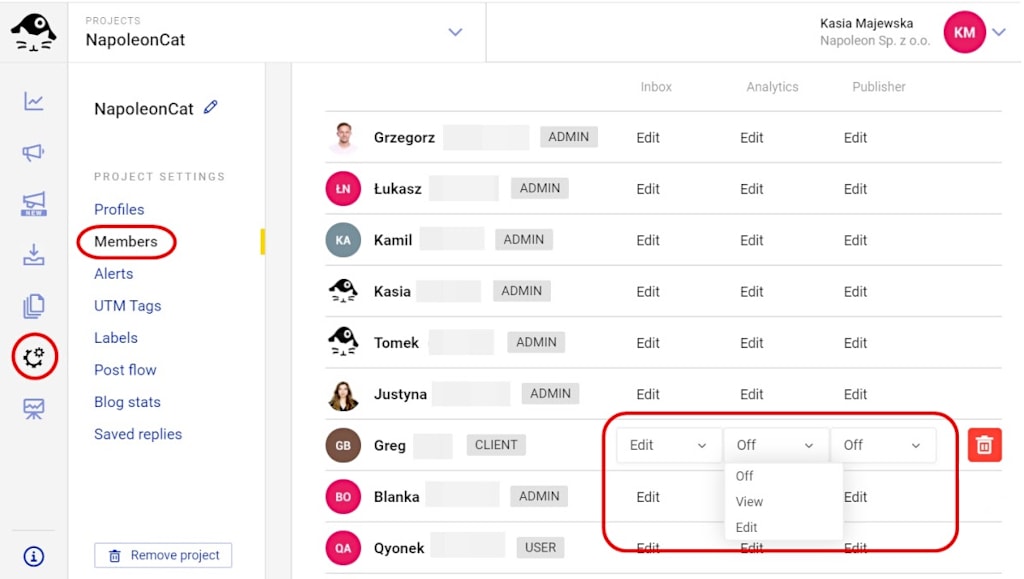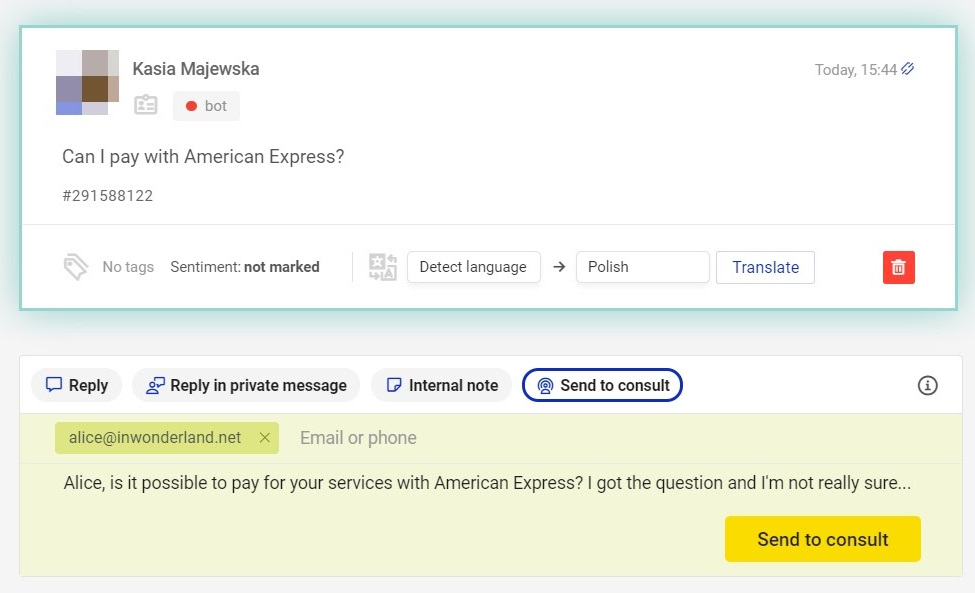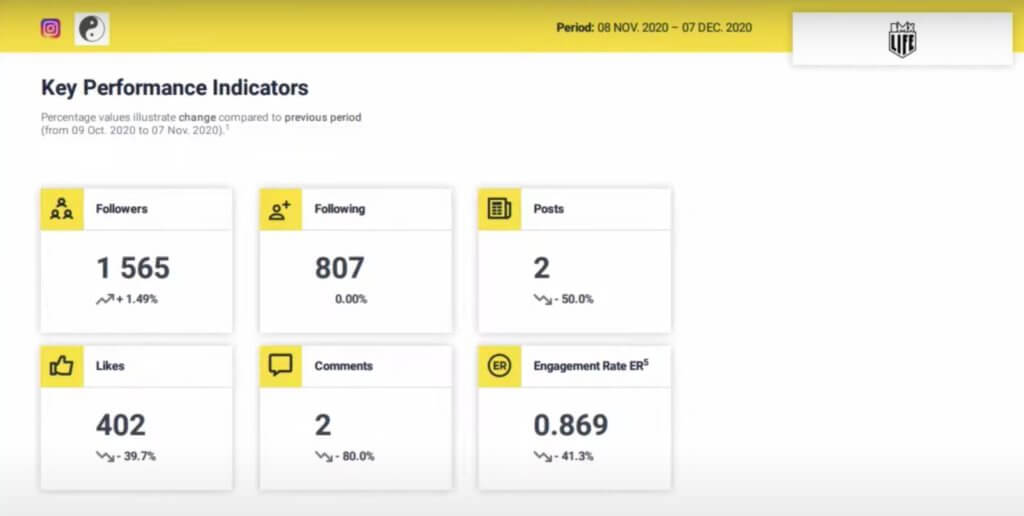For brands looking to start working with social media agencies, finding and shortlisting a few such organizations is just the very first step towards success. It’s all about verifying each social media agency in terms of collaboration, resources, and skills.
However, arranging some processes is leveraged on both the brand’s and the agency’s side. Each brief sent by the former to the latter is associated with research and an evaluation of whether that agency can help. Once that is more or less established, the real fun (the collaboration) can begin.
In this article, you’ll learn how to:
- collaborate with brands
- make the relationship a success
- create a seamless environment for mutual work
We’ve identified a few factors to consider and implement when onboarding a new social media client.
Good practices for creating client-agency connection
Make sure that “It’s a match!”
Brands tend to select agencies based on portfolios, communication, previous campaigns, and/or recommendations. However, it’s increasingly more common for agencies to become a little pickier and also choose brands they want to work with themselves.
If you’ve nailed your niche and found an area of development for your social media agency, you may not want to take every offered project under your wing. Ensure that you choose to collaborate with these clients who are on the same page as you and understand your workflow.
If they suit your portfolio, and your current experience allows you to say “yes, we’ll work great together” confidently, then you are given the green light for the cooperation.
Identify needs and expectations
Recognizing what a particular brand expects from their social media presence can shape the whole partnership. Even if your agency has the requisite skills to deliver some measurable effects (in terms of PPC campaigns, for example), it may turn out that the brand’s expectations are disproportionately high compared to the agreed budget.
First, establish what your potential client wants and what they need in terms of a social media strategy.
Figuring out what a particular client needs may take time, especially if the bar has been set high. However, it’s necessary to do so at the very beginning.
Some brands may have had bad experiences (with other agencies), so they now make decisions on a “once bitten, twice shy” basis, with an even stricter set of requirements. Your task here is to find common ground with your potential client – or resign from taking the project.
Double-check your resources
Don’t promise the moon. Determine whether you have the necessary resources and knowledge to deliver the desired results. Don’t take on a task just because you feel that you can accomplish it, or think that you will learn on the go. If you don’t have enough time to take on another project, it’s better to pull out entirely than to do a lousy job. Otherwise, you may be left with a disappointed client, a lack of results, or burnout from pulling all-nighters to provide something that still leaves a lot to be desired.

Winning social media agencies automate
You need to do that, too. Otherwise, you can’t compete with your competitors! Try NapoleonCat’s easy-to-use automation tools.
Try NapoleonCat free for 14 days. No credit card required.
Set up procedures
Before you seal a deal, you should also establish a set of procedures that include reporting, stand-ups, status meetings, and points of contact. Your clients should be made well aware of your working hours and contact people, as well as the potential consequences of them requiring overtime or the scope of extra work.
If you agree to send reports just once a month, but you’re still willing to hop on a statutory call once a week, highlight this for your clients to make sure you’re on the same wavelength. That is unless you want to deal with multiple emails every day and calls 5 minutes before you clock off or an hour before you start the working day, simply because you haven’t figured a schedule out with your client earlier.
You should also identify which channels you will use for seamless collaboration. One of the best ideas may be to start using a social media management tool for planning content calendars, giving approvals, and discussing possible changes to social media posting.
(NapoleonCat ticks all of these boxes. Just saying! We’ll cover it later on, though.)
Ask for materials
It’s been decided – you’re going to work together. Great! Ask your new client about some materials that could help you with internal onboarding. Presentations, brand books, graphics, or even some side notes will help create a content strategy.

You can even go a step further and arrange a workshop with your clients so that they can meet your team, get to know each other’s capabilities, and identify areas for improvement or development.
Pick a goal
Objectives and metrics do matter – not only for the client who pays for results but also for the agency who promises to deliver them. Having a clear goal helps both sides to steer their collaboration on the path to achieving satisfying effects. Goals are always something to strive towards and serve as a point of reference and challenge and push the boundaries.
Be a helping hand
It’s not only about the business – it’s also about relations and collaboration. In an ever-changing environment (we’re writing this during a global pandemic after all), both sides must be flexible and adjustable.
If there are some changes to be implemented on the go, think of making them instead of just sending an additional invoice.
Of course, sometimes enough is enough, and it may not always be possible to make adjustments (especially if work is in progress). Still, such a compromise can help you build a bond with your clients and contribute to them recommending your services to others.
How can NapoleonCat support collaboration between brands and agencies
Give your clients access to NapoleonCat
To make sure that processes are transparent for everyone, you can give your clients access to a particular project within NapoleonCat so that they can also keep an eye on progress.
Thanks to that access, the clients can control community management efforts in NapoleonCat’s Social Inbox and provide support if needed, check a content plan, approve it, and collaborate in a particular scope.

What’s more, agencies can adjust access levels for their clients. By giving clients access to viewing but not editing content plans, you can easily avoid any misunderstandings resulting from “an accidental miss-click.” However, if the client wants to be involved in content creation or community management (e.g., their Head of Customer Service wants to answer messages outside your working hours), they can be given the necessary access.
Get feedback and approval
Each comment or message in the Social Inbox can be quickly discussed further with anyone – it’s enough to know someone’s email address to send them some interactions for consultation. Such a person doesn’t even have to be granted access to NapoleonCat.

This feature can also save the day when some problems in communication occur. One such example is to take charge of some requests. If a community manager doesn’t know the cause of a technical glitch reported on social media profiles, they can redirect some questions to the person in charge on the client’s side. It may also help handle complaints or feedback.
You can even automate some processes:
If your clients want to view and reply only to messages connected to a particular topic, they can be automatically informed about such messages thanks to auto-moderation rules.
For example, if one of your clients is an insurance company, they can be automatically notified about social media interactions that include the phrase “travel insurance” or the name of one of their products.
Schedule automatic social media reports
Data is king on social media. With NapoleonCat’s Reports, it’s easier to keep an eye on your results and share statistics with your clients. Customizable data sets display information about selected profiles or posts.
You can easily schedule your social media reports, so that they will be automatically generated and sent out to your clients via email.


Social Media Tool Loved By Customers
Waste no time and try NapoleonCat for free, no credit card required:
Try NapoleonCat free for 14 days. No credit card required.
Over to you
Building a successful bridge between the interests of social media agencies and brands is not the easiest nut to crack. However, when there’s mutual understanding, good communication, and procedures in place, there should be loyalty, success, and satisfaction for everyone. And if you add using NapoleonCat on top of following our other advice, then success will be one step even closer.





